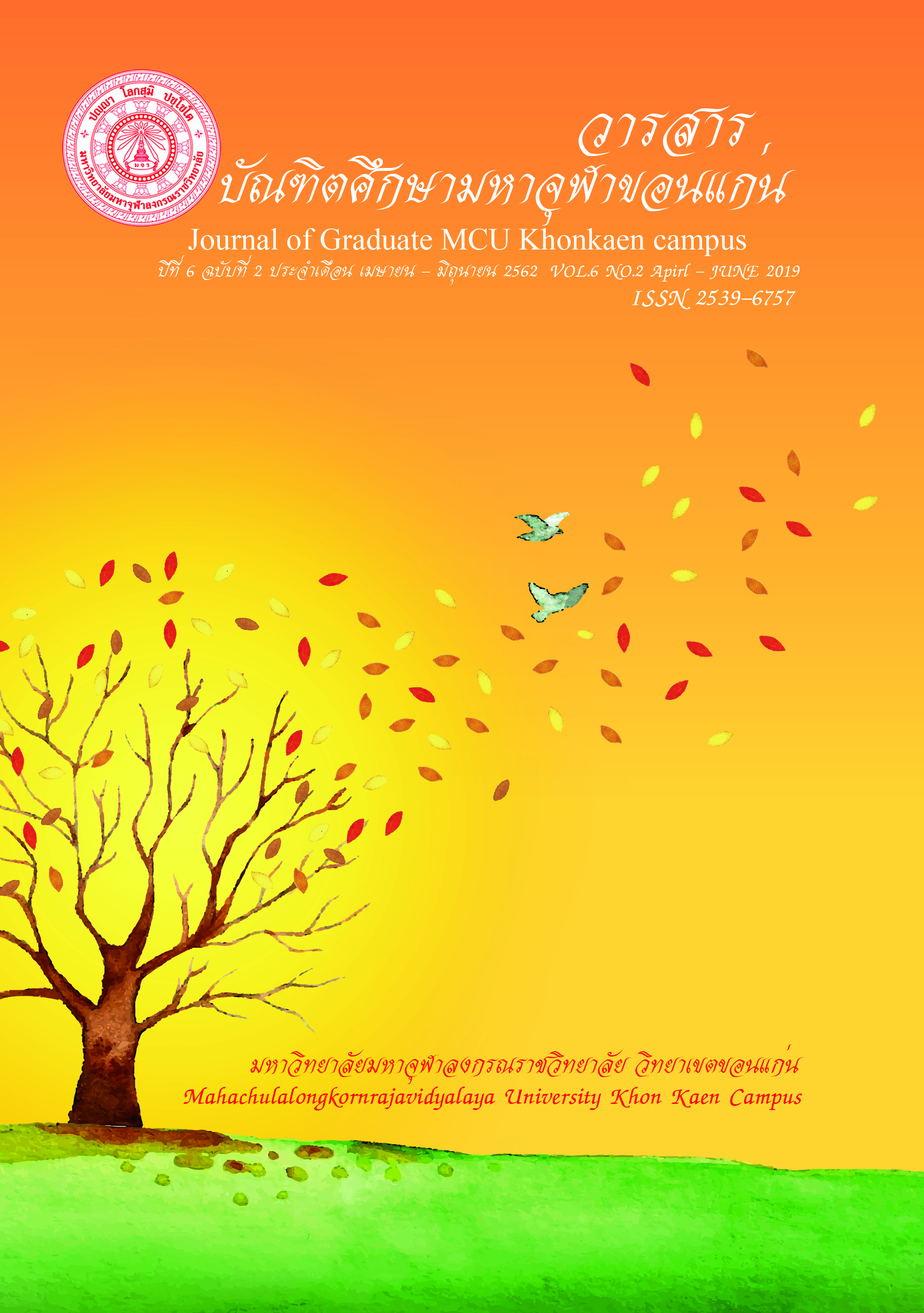Conceptual Problems and Problem-solving Paths in the Pair Chapterof Dhammapada Commentary
Main Article Content
Abstract
This article, as part of the research work entitled “an analytical study of concepts of opposite pairs in the Pairs Chapter of Dhammapadacommentary”,aims to study conceptual problems and problem-solving paths in the Pair Chapter of Dhammapada Commentary. The research is the qualitative work that uses the methods of gathering the data from the related documentaries and research works and analyzing and interpreting the data from the fourteen stories in the Pair Chapter of Dhammapada Commentary, and then presenting the data in the form of analytical description.
The results of research have been found that the problems in concept arepoints or things that are concerned and have to consider to solve in the life of persons, both householders and monks, who live –are possible in the society of householders and the society of monks. Problem-solving may be made by oneself or by other person who is a good friend, coming and helping solving the problem. The problems as appeared in the Pair Chapter of Dhammapada Commentary may be grouped as 1) individual lifeproblems, 2) life problems concerning to the family and 3) life problems concerning to the society of individual. The life problems that occurred have craving (tanha), egotism (mana)andthought(ditthi)as individual’s inner factors to be the important causesin creating the problems, leading to the specification as the four types of problems from the base root of happening, i.e., 1) problems coming from the question, 2) problems coming from the situation, 3) problems coming from tendency and 4) problems coming from the problem-solving. The happened problems in concept are those that can be solved or thought to seek and find the methods leading to problem-solvingby the process of thought and practice according to the four-noble-truths principle of problem-solving. The Buddha solved the problem of retribution to each other in many incantationsbetweenKaliyakkhini and kuladhita in Savatthicityby making a practice along paths leading to problem-solving according to the opposite pairs of suffering (dukkha) and the cause of suffering (samudaya) and of the cessation of suffering (nirodha) and the paths leading to the cessation of suffering (magga).
Article Details
References
th ed.).
Mahasarakham : Apichart Printing.
Daniel Theyagu. (2017). Type of problem. Online. Retrieved October 23,
2018. From : http://th.wikipedia.org/wiki/ปัญหา
Phrabuddhakosachan. (1998).
(21st ed.). Bangkok : Mahamakut Buddhist College.
Phra Dhammapidok (P.A. Payutto). (2003). Buddhamma : Update and expand
the fair. (10th ed.). Bangkok : Buddhamma Foundation.
Phra Maha Hansa Thum Maha So (Nithiboonyakorn). (2010). Integration of
cognitive development for life and society. Bangkok : Thai daily
printing.
Pin Mutukan. (1999). Solving Strategies for Suffering. Bangkok :
Sangsanbook.

